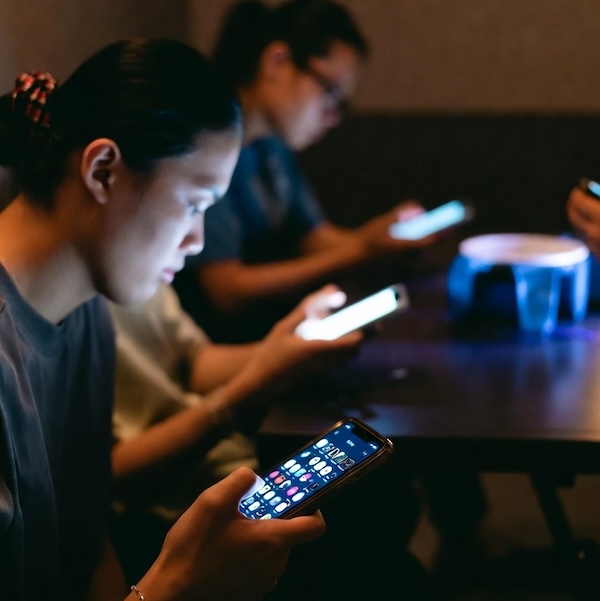Can Social Media Improve Your Mental Health?
By Terry Bu | 04 Nov, 2025
Social media is a double-edged sword that can hurt or help depending on how you use it.
Today's fast-evolving social media makes it hard to discern the impact it is having on Asian-American mental health. [1] In this article we compiled the latest research on how social media may have impacted the mental health landscape among Asian-Americans and whether social media apps are a boon or a bane for our mental health.
One longstanding obstacle to an accurate assessment is the traditional Asian stigmatization of mental illnesses and a general lack of openness toward discussing mental health issues publicly, let alone on social media.
Values are nonstandardized coeffcients representing the relative strength of correlation between use of a social media app and mental health outcomes. (From Journal of Technology in Behavioral Science)
“[Asian-Americans] fear being thought of as weak or crazy for having a mental illness, as our expectations to succeed and look professional are great,” wrote Riley Tien, a Senior at Drexel University, in a 2022 Indonesian Lantern Magazine.
Yet some trends in social media use are discernible.
Surge in TikTok's Popularity
The first is the rapid rise of TikTok’s popularity during the past several years, especially among teenagers, and its implications for the possible rise in depression among the same group. Multiple studies of this trend suggests that the surge in TikTok use may be contributing to negative mental health outcomes.
Nearly 40% of TikTok's global audience is Asian, including 29% of U.S. users. That's a lower percentage than Hispanic users at 49% but higher than White users at 28%. A 2024 Pew Research study on teenagers aged 13 to 17 found TikTok to be the second most popular social media platform after YouTube. 50% of that sample admit using TikTok at least several times a day or even more constantly.
A more recent 3-year study of 12,000 early teenagers by Associate Professor Jason Nagata of UC San Francisco found that “TikTok is [currently] the number one platform used by adolescent teenagers [across all ethnicities] followed by Instagram and Snapchat”. [4] This study further found that social media use among study participants surged tenfold from 7 minutes per day at age 9 to 74 minutes per day by age 13. More importantly, reported depression symptoms from the sample jumped 35% during that same time frame.
“Social media does seem to be a risk factor for future depression, or worsening depressive symptoms,” Professor Nagata said, and adds that “cyberbullying is a possible driver of [these] depressive symptoms.”
Children age 11 to 12 who experienced cyberbullying were more than twice as likely to report experiencing suicidal ideation or a suicide attempt within the following year as well as being more than twice as likely to experiment with substance use, including marijuana, alcohol and tobacco. [5]
TikTok seems to be a major driver of cyberbullying as it allows bullies to remain anonymous from around the world, with access to comment or criticize content 24/7. A similar situation is found on YouTube.
A January 2025 online survey of 575 young adults calculated time spent on Twitter, TikTok, YouTube, Instagram, Reddit, Snapchat, and Facebook as well as self-reported measure of depression, anxiety, PTSD, loneliness, and self-esteem. Researchers concluded that greater use of Tiktok and YouTube was consistently associated with more mental health issues such as anxiety and depression.
Teens themselves are becoming more wary of how social media is impacting peers. Roughly half of teenagers sampled through Pew Research Center in late 2024 reported that apps like TikTok have a "mostly negative effect" on people and friends their age up from 32% in 2022, though only 14% thought apps negatively affected them personally.[7]

Asian American Success Stories
- The 130 Most Inspiring Asian Americans of All Time
- 12 Most Brilliant Asian Americans
- Greatest Asian American War Heroes
- Asian American Digital Pioneers
- New Asian American Imagemakers
- Asian American Innovators
- The 20 Most Inspiring Asian Sports Stars
- 5 Most Daring Asian Americans
- Surprising Superstars
- TV’s Hottest Asians
- 100 Greatest Asian American Entrepreneurs
- Asian American Wonder Women
- Greatest Asian American Rags-to-Riches Stories
- Notable Asian American Professionals

